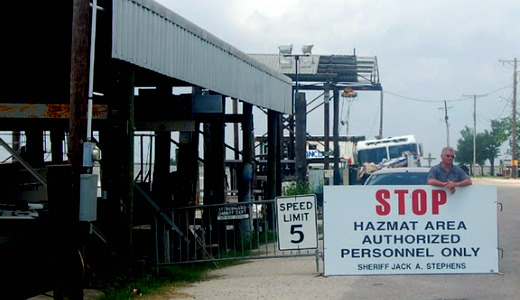
NEW ORLEANS – The BP oil explosion offshore has already snuffed out the lives of workers and threatened the economic survival of at least 200,000 residents in this state alone. The oil spill, scientists here warn, could also transform one of the nation’s most ecologically valuable areas forever.
As expected, tar balls and oiled seaweed are beginning to wash up on beaches here, as they have after other big oil spills. But scientists say the environmental disaster unfolding is dramatically different from anything the nation has yet experienced.
The oil spreading across the Gulf, much faster than many previously believed, is the first major spill in U.S. waters whose worst effects may largely be hidden under water.
BP has been trying to take credit for slowing the movement of oil and tar balls toward the coast, saying that the chemical dispersants the company uses are doing their job.
But Ronald Kendall, a professor at Texas Tech University who has done extensive research on the effects of oil in various ecosystems, said, “To me, it’s a disaster already. It doesn’t have to go up on the beach.” Kendall said the spill’s effects on deep sea life might not be fully understood for years and that what is happening in the Gulf is a “massive experiment” in how to poison an entire ecosystem.
Because of the leak’s extreme depth, and the use of 500,000 gallons of dispersants, the idea that oil floats no longer holds, environmental scientists here say. Contrary to BP’s claims that the dispersants are saving the coastline, the oil is settling on sensitive corals and poisoning ecosystems that produce shrimp, snapper and many other types of fish – all in places that are too deep for humans to intervene in a helpful fashion, scientists say.
Several scientists in the immediate area are concerned that far too little is really known about the spill. They note that oil on the surface can be spotted by planes and satellite images but there is little equipment telling where oil has traveled below the surface.
“By dispersing the oil at depths, you create smaller globules of oil and it makes the oil more likely to be affected by even the slow moving currents,” said James Cowan, a professor of oceanography at Louisiana State University. “We just don’t know where it is, and we don’t know where it is going.”
Environmentalists worry the oil could be reaching coral formations on the Gulf floor which support major fish populations or that the oil could be absorbed or eaten by small animals or plants at the base of the Gulf food chain. The toxins would then accumulate in larger animals, possibly killing them or destroying their ability to reproduce.
Prosanta Chakrabarty, an assistant professor at LSU and expert on fish and marine life, said, “People think of oiled birds and animals and things like that and overlook the effects of the BP oil spill in the deep sea. There will be effects. This is where the oil is coming from.”
“When the Exxon Valdez spilled, it was at the surface, and it stayed at the surface,” Chakrabarty said. “This is totally different. A lot of oil is coming up, but some of it is at different levels.” He said that oil is spreading both at the surface and at levels well below.
He said that the 2,000 species that live in the deep sea environment are facing two major assaults that they, unlike life forms near or on the surface, haven’t had to face before – the massive oil leak itself and the chemical dispersants with which they are being bombarded.
In the area’s marshes, there is another world even less visible to the human eye that is also at risk. Its fate is particularly important because the entire marsh ecosystem depends on the survival of the microscopic creatures that live in a slim top layer of marsh mud.
“The top 2 millimeters of that marsh muck is where the action is in a coastal estuary,” said Kevin Carman, dean of the College of Basic Sciences at LSU. “That’s the base, the food that fuels the whole system. If you lose that in a large enough area it could have a disproportionate impact on the food web, and everything that depends on it – fish, shrimp, oysters, all the species that rely on the estuary.”
Carman describes the slimy zone that is just seven-hundredths of an inch thick as “an incredible engine for a wide range of life.” The larger animals, including birds, wild hogs and even humans are part of the chain, environmentalistsnote. For ages, that thin zone of microscopic life has survived all the hits nature delivers, from hurricanes to freezes. The worry now is how well it will cope with a giant oil spill washing ashore.
Photo: Hazmat signs are now posted along Gulf Coast docks. (PW/Blake Deppe)










